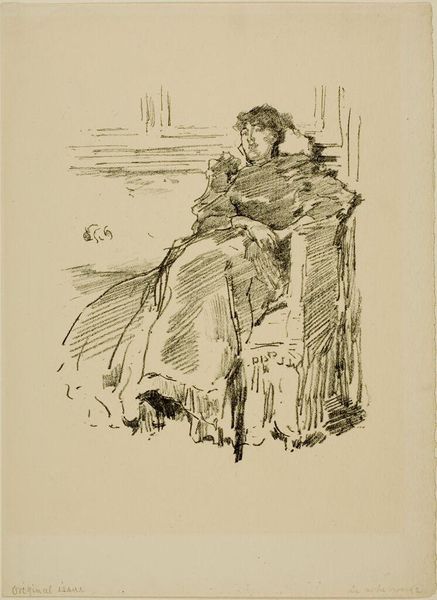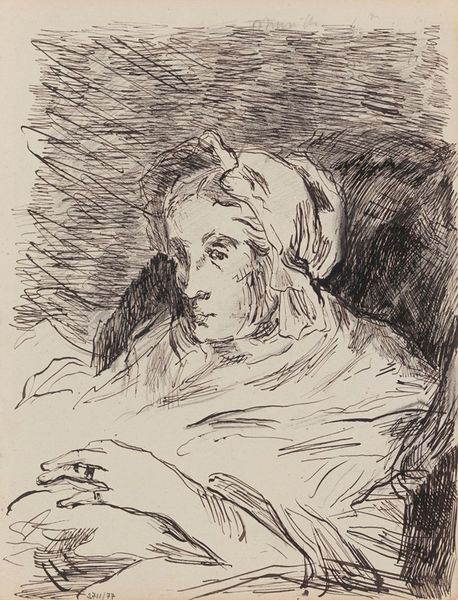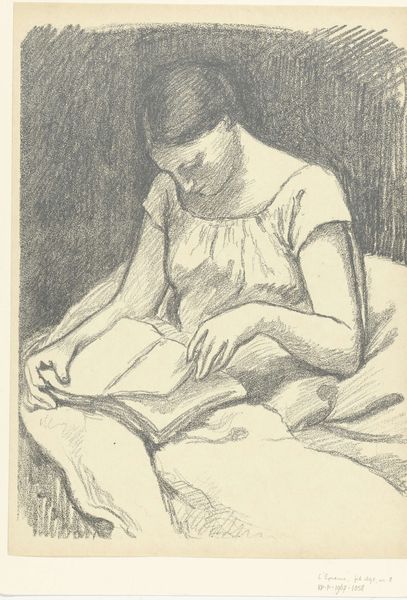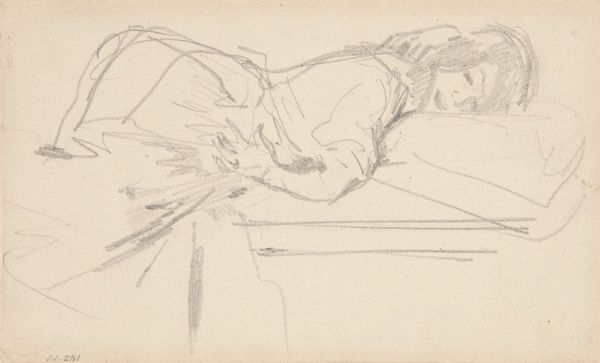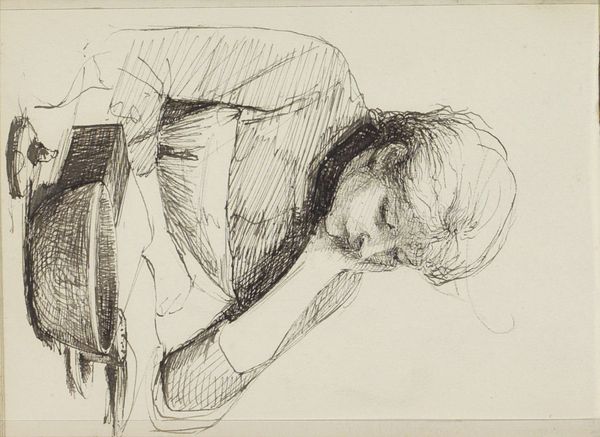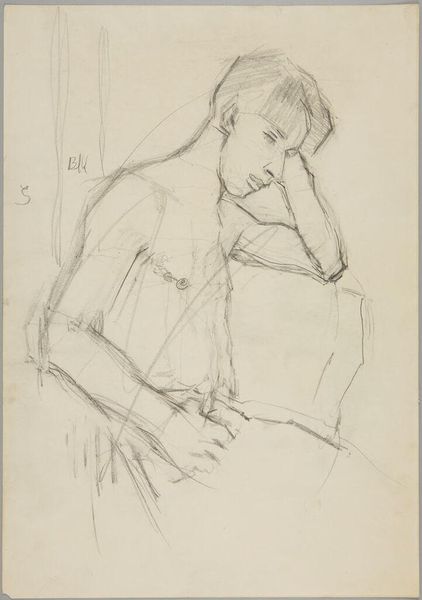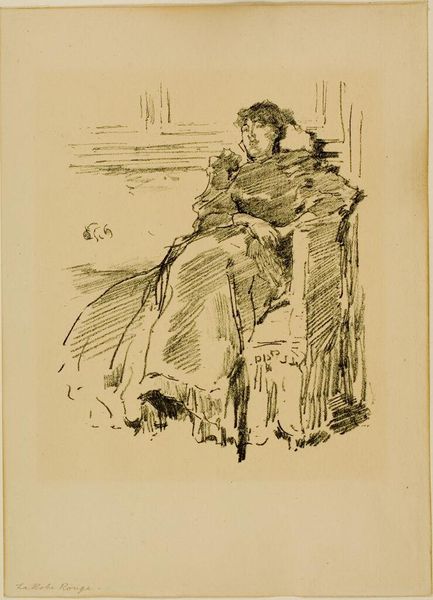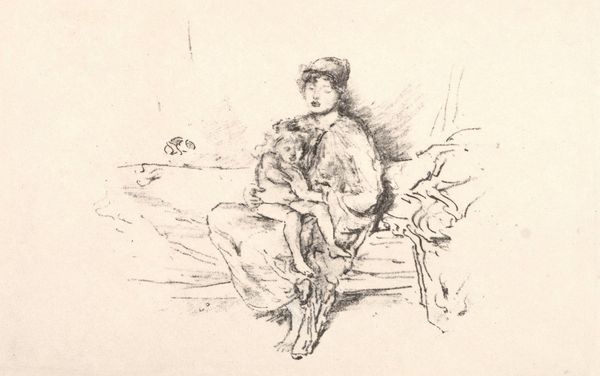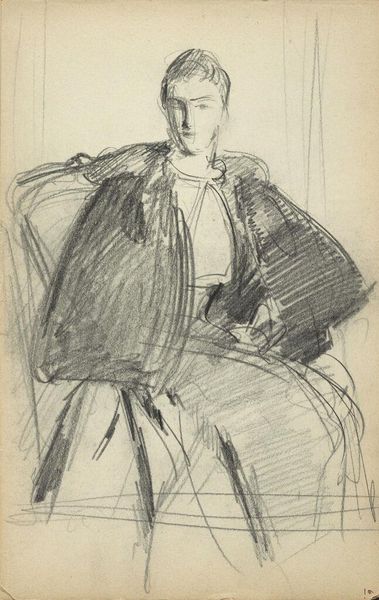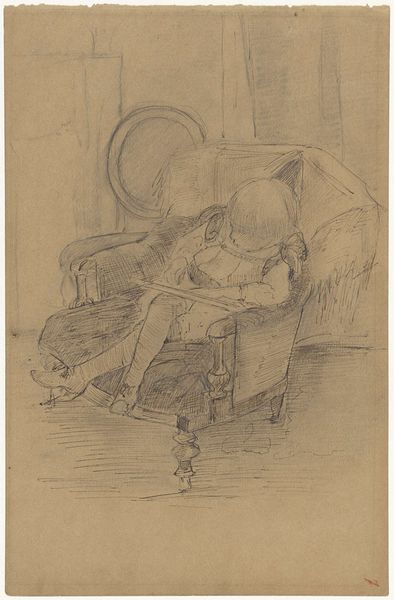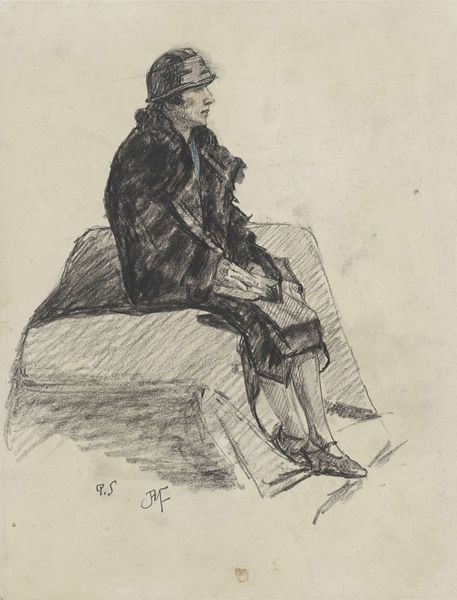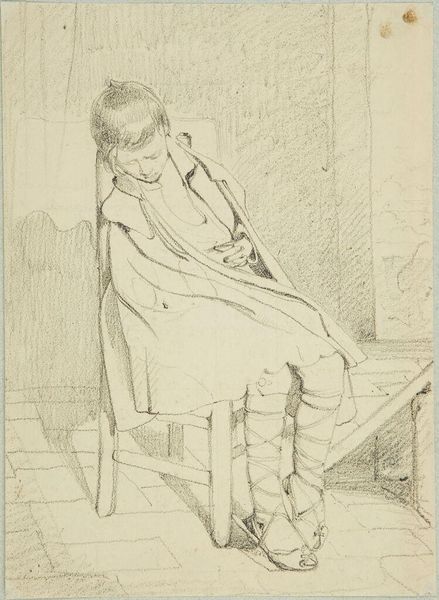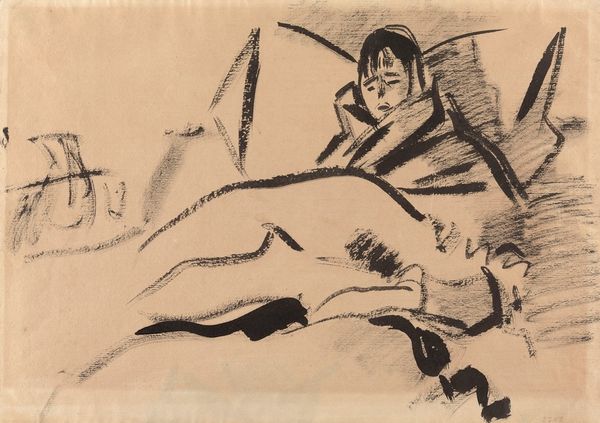
drawing, pencil
#
portrait
#
drawing
#
pencil sketch
#
figuration
#
pencil
#
ashcan-school
#
portrait drawing
Copyright: Public Domain: Artvee
Editor: Robert Henri's pencil drawing, "Young Girl," created in 1916, has such an unassuming quality, even though it depicts a figure. It feels quite raw. What stands out to you about it? Curator: I'm drawn to how Henri uses a common material, pencil, not to create a polished, idealized portrait, but to capture a fleeting moment, the labor visible in the hatching lines. It is about a “common” scene as much as it is about the figure itself, really dissolving high/low art barriers. Think of the Ashcan School context. How does the rapid production of sketches like this one influence how we value artistic skill and the artistic process itself? Editor: That makes me think about the accessibility of the medium. Pencil is relatively cheap and available to anyone, making art creation potentially less exclusive. Curator: Exactly. And how does that influence the perception of the subject, the "Young Girl"? Is she a wealthy patron? Or is she someone from a different social strata who the artist has chosen to elevate through the very act of drawing, of depicting, or manufacturing her “portrait?” Editor: So, even the choice of materials reflects a broader social commentary, moving away from the traditional patronage system toward a more democratic art production? Curator: Precisely. The pencil itself becomes a tool for challenging established power dynamics. We often overlook the means of art production when we discuss the artwork, itself! Editor: I never thought of it that way, but now I see how deeply connected the medium and the message can be. Thanks for making that connection. Curator: It’s been illuminating discussing this with you, looking at this through another's perspective often reveals novel associations of culture with manufacturing of image.
Comments
No comments
Be the first to comment and join the conversation on the ultimate creative platform.
